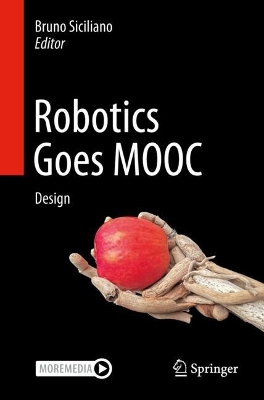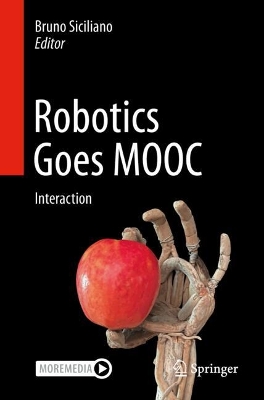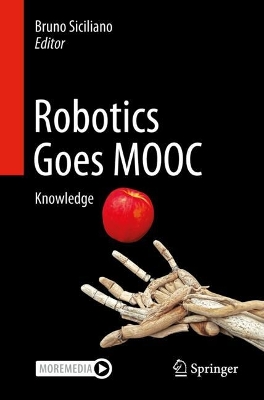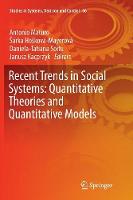Complex Networks VIII
 -15%
portes grátis
-15%
portes grátis
Complex Networks VIII
Proceedings of the 8th Conference on Complex Networks CompleNet 2017
Zlatic, Vinko; Menezes, Ronaldo; Sinatra, Roberta; Goncalves, Bruno
Springer International Publishing AG
07/2018
262
Mole
Inglês
9783319853505
15 a 20 dias
454
Descrição não disponível.
Part I: Theory of Complex Networks.- Second-Order Assortative Mixing in Social Networks.- Network motifs detection using random networks with prescribed subgraph frequencies.- Network motifs detection using random networks with prescribed subgraph frequencies.- Fuzzy Centrality Evaluation in Complex and Multiplex Networks.- Part II: Community Structure.- Enhancing Space-Aware Community Detection Using Degree Constrained Spatial Null Model.- Node-centric community detection in multilayer networks with layer-coverage diversification bias.- Community Detection in Signed Networks Based on Extended Signed Modularity.- Characterising inter and intra-community interactions in link streams using temporal motifs.- Part III: Dynamics of Networks.- Modeling the Impact of Privacy on Information Diffusion in Social Networks.- Evolution Similarity for Dynamic Link Prediction in Longitudinal Networks.- Stochastic Modeling of the Decay Dynamics of Online Social Networks.- Part IV: Applications of Network Science.- Complex Reaction Network in Silane Plasma Chemistry.- Seeing Red: Locating People of Interest in Networks.- Understanding Subject-based Emoji Usage using Network Science.- Characterization of Written Languages using Structural Features from Common Corpora.- Optimal Information Security Investment in Modern Social Networking.- Part V: Social Structure.- Emergence of social balance in signed networks.- Community Detection in the Network of German Princes in 1225: a Case Study.- Comparative topological signatures of growing collaboration networks.- Part VI: Human Behavior.- Explaining changes in physical activity through a computational model of social contagion.- Everyday the Same Picture: Popularity and Content Diversity.- Part VII: Biological Networks.- Investigating side effect modules in the interactome and their use in drug adverse effect discovery.- Attractor Analysis of the Asynchronous Boolean Model of the Klotho Gene Regulatory Network.
Este título pertence ao(s) assunto(s) indicados(s). Para ver outros títulos clique no assunto desejado.
Computational Intelligence;Complex Networks;COMPLENET;Network Science;Conference on Complex Networks;network controllability;recommendation systems;complexity proceedings;computational social sciences;complexity
Part I: Theory of Complex Networks.- Second-Order Assortative Mixing in Social Networks.- Network motifs detection using random networks with prescribed subgraph frequencies.- Network motifs detection using random networks with prescribed subgraph frequencies.- Fuzzy Centrality Evaluation in Complex and Multiplex Networks.- Part II: Community Structure.- Enhancing Space-Aware Community Detection Using Degree Constrained Spatial Null Model.- Node-centric community detection in multilayer networks with layer-coverage diversification bias.- Community Detection in Signed Networks Based on Extended Signed Modularity.- Characterising inter and intra-community interactions in link streams using temporal motifs.- Part III: Dynamics of Networks.- Modeling the Impact of Privacy on Information Diffusion in Social Networks.- Evolution Similarity for Dynamic Link Prediction in Longitudinal Networks.- Stochastic Modeling of the Decay Dynamics of Online Social Networks.- Part IV: Applications of Network Science.- Complex Reaction Network in Silane Plasma Chemistry.- Seeing Red: Locating People of Interest in Networks.- Understanding Subject-based Emoji Usage using Network Science.- Characterization of Written Languages using Structural Features from Common Corpora.- Optimal Information Security Investment in Modern Social Networking.- Part V: Social Structure.- Emergence of social balance in signed networks.- Community Detection in the Network of German Princes in 1225: a Case Study.- Comparative topological signatures of growing collaboration networks.- Part VI: Human Behavior.- Explaining changes in physical activity through a computational model of social contagion.- Everyday the Same Picture: Popularity and Content Diversity.- Part VII: Biological Networks.- Investigating side effect modules in the interactome and their use in drug adverse effect discovery.- Attractor Analysis of the Asynchronous Boolean Model of the Klotho Gene Regulatory Network.
Este título pertence ao(s) assunto(s) indicados(s). Para ver outros títulos clique no assunto desejado.







